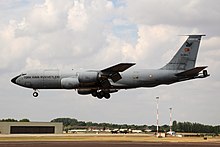Asena


Asena is the name of a she-wolf associated with the Oghuz Turkic foundation myth.[1][2] The ancestress of the Göktürks is also a she-wolf, mentioned yet unnamed in two different "Wolf Tales" recorded by Chinese chroniclers.[3] The legend of Asena tells of a young boy who survived a battle; a female wolf finds the injured child and nurses him back to health. The she-wolf, impregnated by the boy, escapes her enemies by crossing the Western Sea to a cave near the Qocho mountains and a city of the Tocharians, giving birth to ten half-wolf, half-human boys. Of these, [4] becomes their leader and establishes the Ashina clan, which ruled over the Göktürk and other Turkic nomadic empires.[5][6]
Modern era[]
With the rise of Turkish ethnic nationalism in the 1930s, the veneration of figures of Turkic Mythology, such as Bozkurt, Asena and Ergenekon was resurgent.[7] The symbol of Asena is embossed on the stage of the personal theater of the first President of Turkey, Mustafa Kemal Atatürk, at his residence in Ankara.[7] He also referenced the motif in his speeches, such as that of 13 February 1931 in Malatya titled Türk Ocağı.[8][9]
Also Turkish Air Force's Boeing KC-135 Stratotanker filo uses nickname as ''Asenas''
See also[]
- Grey wolf (mythology)
- Tiele people, whose progenitors were a gray he-wolf and a Xiongnu princess
- She-wolf (Roman mythology), a similar figure in the mythical foundation of Rome
- Romulus and Remus
References[]
- ^ André Wink. Al-Hind: The Making of the Indo-Islamic World. Brill Academic Publishers, 2002. ISBN 0-391-04173-8. Page 65.
- ^ Ziya Gökalp, transcription: Şahin Filiz, "Türk devletinin tekâmülü 12: Hakanlık Teşkilatı",Küçük Mecmua -II-, Bu da Çinlilere göre (Asena=Kurt) manasındadır (in Turkish)
- ^ Golden, Peter B. (August 2018). "The Ethnogonic Tales of the Türks" in The Medieval History Journal, 21(2). 21 (2): 291–327
- ^ Hongen, Niu; 牛鴻恩 (2015). Xin yi Yi Zhou shu. 袁宏. (Di 1 ban ed.). Taibei Shi: 三民書局. ISBN 9789571460192. OCLC 913445355.
- ^ Findley, Carter Vaughin. The Turks in World History. Oxford University Press, 2005. ISBN 0-19-517726-6. Page 38.
- ^ Roxburgh, D. J. (ed.) Turks, A Journey of a Thousand Years. Royal Academy of Arts, London, 2005. Page 20.
- ^ a b Murat Arman, "The Sources of Banality In Transforming Turkish Nationalism", CEU Political Science Journal, issue: 2 (2007), p. 136.
- ^ Atatürk'ün Söylev ve Demeçleri II, Atatürk Kültür, Dil ve Tarih Yüksek Kurumu Atatürk Araştırma Merkezi, 1989, p. 301, Turkish text: Demiryollarını kullanacak olan Türk milleti menşeindeki ilk sanatkarlığına, demirciliğinin eserini tekrar göstermiş olmakla müftehir olacaktır. (in Turkish)
- ^ Mehmet Önder, Atatürk'ün Yurt Gezileri, Türkiye İş Bankası, 1975, p. 268.
- Göktürks
- Turkic legendary creatures
- Wolves in folklore, religion and mythology
- Origin myths